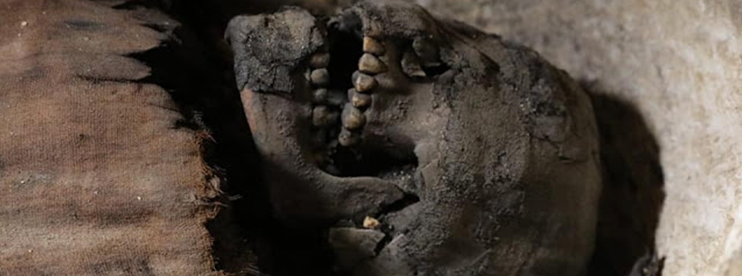Egyptian archaeologists unveils a Pharaonic tomb containing forty mummies wrapped in linen from Egypt’s Tuna el-Gebel archaeological site in Southern Minya province on Saturday, which are cut out of rock.
Authorities are suspecting that the mummies belonged to a middle-class family who probably lived during the Ptolemaic period, from the fourth century BC to just before the birth of Jesus. The researchers are getting help from the other objects which found inside the tomb.
Including 22 adult men and women, the archaeologists found 12 children and 6 animals.
“All are in a good conservation condition, and some are wrapped in linen, or decorated with Demotic handwriting,” said Rami Rasmi and added “others were placed in clay coffins or wooden sarcophagi.”
“We have not found names written in hieroglyphics. The method of mummification indicated that the deceased were people in prestigious positions.”
The burial site’s location was first discovered last February by researchers from the ministry and Minya University.
The researchers also found Pottery and papyri.
“Some of them were buried inside stone or wooden sarcophagi while others were buried in sands or on the floors of the tombs or inside niches.”
“The grave that we are talking about here has a well that is almost nine metres deep, leading to four chambers underground holding a great number of mummies — over 50 mummies,” said Mostafa Waziri, secretary-general of the Supreme Council of Antiquities.
> Puza Sarker Snigdha













